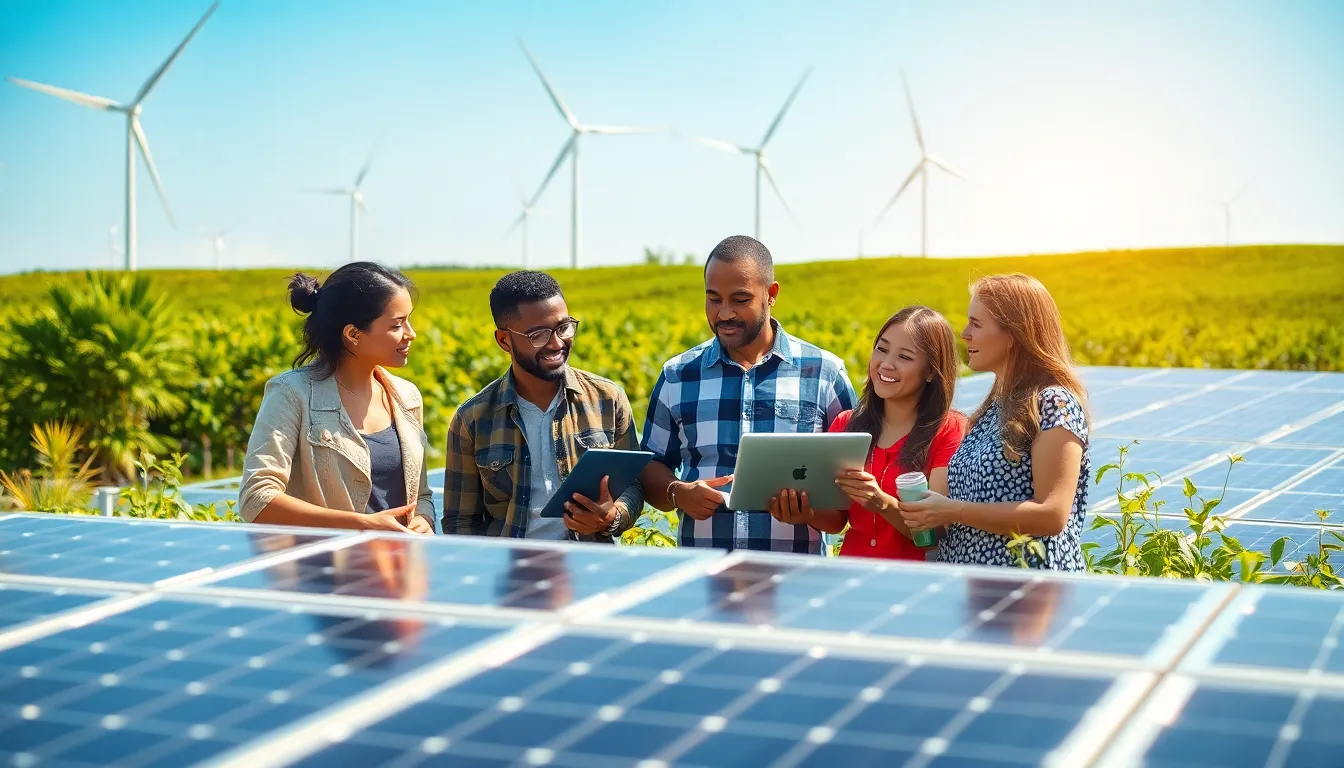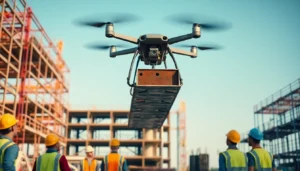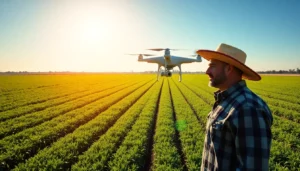Table of Contents
ToggleIn a world where gadgets seem to multiply faster than rabbits, sustainable technology emerges as the superhero we didn’t know we needed. It’s like the eco-friendly cape that helps save the planet while keeping our tech addiction in check. Imagine a future where your smartphone not only connects you with friends but also helps plant trees—sounds like a sci-fi movie, right?
Overview of Sustainable Technology
Sustainable technology encompasses innovations designed to minimize environmental impact while promoting social equity. These technologies prioritize renewable resources, energy efficiency, and waste reduction. Many sectors, including energy, transportation, and manufacturing, actively seek sustainable solutions.
Solar panels exemplify sustainable technology’s efficacy. They harness sunlight, converting it into electricity without emitting harmful pollutants. Wind turbines also capitalize on renewable energy sources, generating power that contributes to a cleaner atmosphere.
Efforts in smart agriculture showcase another facet of sustainable technology. Precision farming utilizes data analytics to enhance crop yields while reducing water and fertilizer usage. This approach leads to efficient resource management, resulting in improved food security.
Electric vehicles (EVs) represent a significant shift toward sustainable transportation. They reduce reliance on fossil fuels, resulting in lower greenhouse gas emissions. Battery technology advancements make EVs more accessible, promoting increased adoption and reducing urban pollution levels.
Sustainable building practices integrate energy-efficient designs and materials. Structures designed with sustainability in mind utilize solar energy, improve indoor air quality, and lower overall energy consumption. Green buildings contribute positively to the environment and create healthier living spaces for occupants.
Investment in circular economy practices further illustrates sustainable technology’s potential. These practices emphasize recycling and reusing materials, thereby reducing waste. By promoting a closed-loop system, businesses can minimize their carbon footprint while still meeting consumer demand.
The ongoing development of sustainable technology enhances its role in addressing global challenges. As innovations continue to emerge, their adoption becomes vital for fostering a sustainable future.
Importance of Sustainable Technology

Sustainable technology plays a critical role in shaping a healthier planet. It helps balance human needs with environmental conservation.
Environmental Impact
Innovations in sustainable technology significantly reduce ecological harm. For instance, solar panels generate clean energy, cutting reliance on fossil fuels. Wind turbines also provide alternative energy sources, lowering greenhouse gas emissions. Smart agriculture methods enhance food production while minimizing resource use, positively affecting biodiversity. These practices not only help conserve natural habitats but also promote responsible land use. Adopting sustainable technology leads to cleaner air and water, supporting healthier ecosystems. Consequently, preserving essential resources for future generations becomes more achievable.
Economic Benefits
Investing in sustainable technology drives economic growth. Companies leveraging eco-friendly innovations often experience increased efficiency, resulting in cost savings. Transitioning to renewable energies reduces long-term operational costs for businesses. Electric vehicles lower fuel expenses and maintenance costs, benefiting both consumers and manufacturers. Furthermore, sustainable construction techniques create jobs while reducing energy bills for homeowners. The circular economy, which focuses on recycling materials, encourages sustainable job creation. Through these advances, the economy thrives while aligning with environmental goals.
Types of Sustainable Technology
Sustainable technology varies across sectors, focusing on reducing environmental impact and enhancing efficiency. Innovations in this realm demonstrate significant benefits for both the planet and society.
Renewable Energy Solutions
Solar panels harness sunlight to generate electricity, reducing reliance on fossil fuels. Wind turbines capture wind energy and convert it into clean power. Geothermal systems utilize natural heat from the Earth, offering sustainable heating and cooling options. These renewable energy solutions significantly decrease greenhouse gas emissions and promote energy independence. For instance, solar power alone accounted for over 20% of new electricity generation in the United States in 2022. Transitioning to these alternatives fosters a cleaner energy landscape and contributes to global climate goals.
Sustainable Agriculture Practices
Smart farming techniques enhance crop yields while conserving resources. Precision agriculture employs data analytics to optimize water usage and improve fertilizer application. Techniques such as crop rotation and organic farming bolster soil health and maintain biodiversity. Urban farming initiatives integrate green spaces into cities, promoting local food production. These sustainable agriculture practices increase food security and reduce environmental degradation. For example, urban farms can cut transportation emissions by delivering food closer to consumers.
Eco-Friendly Transportation
Electric vehicles (EVs) produce zero tailpipe emissions, significantly decreasing air pollution in urban areas. Public transportation systems, like electric buses and trains, effectively lower the carbon footprint of daily commutes. Biking and walking paths encourage healthier lifestyles while reducing vehicle dependency. These eco-friendly transportation options enhance air quality and minimize traffic congestion. Adoption of EVs surged, with a 70% increase in sales in 2021 compared to the previous year. Prioritizing sustainable transport solutions leads to cleaner cities and improved public health.
Challenges in Implementing Sustainable Technology
Implementing sustainable technology presents distinct challenges that must be addressed for successful integration. Understanding these barriers provides insight into the complexities of fostering eco-friendly innovations.
Technological Barriers
Technological barriers hinder the widespread adoption of sustainable solutions. Many existing infrastructures lack compatibility with eco-friendly technologies, deterring organizations from making necessary upgrades. Innovations in sustainable technology often face scalability issues, which limit their application across diverse sectors. Additionally, knowledge gaps exist among users regarding the operation and benefits of these new technologies. Reluctance to embrace change further exacerbates these challenges, slowing down progress toward sustainability goals.
Financial Constraints
Financial constraints significantly impact the growth of sustainable technology. Initial investment costs for eco-friendly equipment and systems can be prohibitive for many businesses. Budget allocations often prioritize immediate returns over long-term benefits, making it difficult to invest in innovative solutions. Furthermore, inadequate funding for research and development stifles the advancement of new sustainable technologies. Organizations frequently seek incentives or financial support to overcome these costs, underscoring the need for more robust policies promoting sustainable investments.
Future Trends in Sustainable Technology
Emerging technologies will drive advancements in sustainable practices. Collaboration between sectors will enhance efficiency and innovation. For instance, blockchain technology will enable transparent supply chains, promoting ethical sourcing of materials. This trend reduces waste and encourages responsible consumer behavior.
Smart grid technology will reshape energy distribution. Utilities will implement intelligent systems to match energy supply with demand, minimizing reliance on fossil fuels. Data analytics will play a crucial role in optimizing energy consumption patterns across households and businesses.
Vertical farming will gain traction in urban areas. This method allows for food production in limited spaces, significantly reducing the carbon footprint associated with transportation. As urban populations grow, food localization becomes essential for sustainability.
Waste-to-energy technologies will transform refuse into resources. Facilities will convert non-recyclable waste into energy, addressing landfill challenges while generating power. Innovations in this area can further reduce greenhouse gas emissions and enhance waste management strategies.
Transportation innovations will prioritize electric and hydrogen fuel cell vehicles. These advancements will lower reliance on conventional fuels and improve air quality. As charging infrastructure expands, consumer adoption will increase, creating more sustainable commuting options.
Circular economy models will become the norm in manufacturing. Companies will focus on reusing materials and minimizing waste throughout production processes. By designing products for durability and recyclability, businesses can align profitability with sustainability goals.
Overall, these trends signify a shift toward a greener future, where technology enhances environmental stewardship and fosters a balanced relationship between human activity and the planet.
Sustainable technology is paving the way for a greener future where innovation and environmental responsibility go hand in hand. As society becomes increasingly reliant on technology, the shift toward eco-friendly solutions is essential for preserving the planet. The integration of renewable energy sources and smart practices in various sectors not only addresses environmental challenges but also fosters economic growth.
Investing in sustainable innovations presents opportunities for efficiency and cost savings while creating jobs and enhancing quality of life. As emerging technologies continue to evolve, collaboration across sectors will drive further advancements. This commitment to sustainability will ultimately lead to a balanced relationship between human progress and environmental stewardship. Embracing sustainable technology isn’t just a choice; it’s a necessity for a thriving planet.







